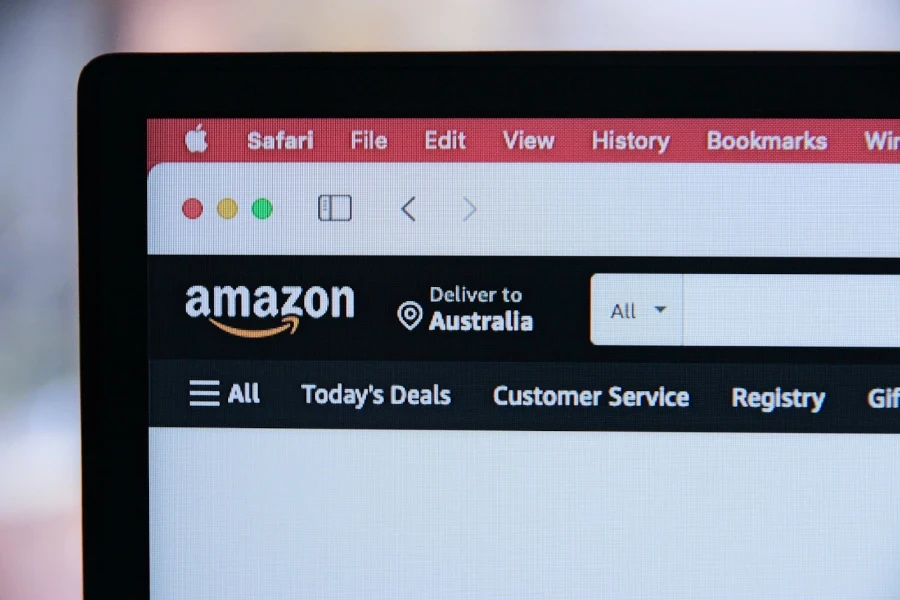Whether venturing into the digital marketplace for the first time or looking to elevate your existing presence, choosing an e-commerce platform to sell your goods can make or break your business. From the vast array of options available, each promising unparalleled features and benefits, finding the perfect fit can be daunting, but it doesn’t have to be.
Here, we’ll delve into the key considerations new e-commerce entrepreneurs must weigh up. From the user-friendly interfaces of leading platforms to the intricacies of customization, scalability, and the nuances of payment gateways, we’re here to guide you through whether you should opt for the independence of a standalone platform like Shopify or the bustling marketplace dynamics of giants like Amazon and Etsy.
Welcome to the first step in transforming your entrepreneurial vision into a thriving online reality.
Table of Contents
An overview of e-commerce platforms
How to choose the right e-commerce platform for your business
Deciding between an independent platform and an existing marketplace
Final thoughts
An overview of e-commerce platforms
An e-commerce platform is a digital framework or software application that facilitates online transactions, typically involving buying and selling goods and services over the internet. These platforms provide a virtual marketplace where businesses and individuals can showcase their products or services, and customers can browse, select, and make purchases.
Key features of e-commerce platforms
- Product catalog: Displays products or services with detailed descriptions, images, and pricing
- Shopping cart: A virtual cart where users can add and manage selected items before checkout
- Checkout process: The process through which customers provide shipping information, select payment methods, and complete the purchase
- Payment gateway integration: Secure online payment processing to facilitate transactions using credit/debit cards, digital wallets, or other payment methods
- Order management: Tools for businesses to track and manage orders, including order confirmation, processing, and shipping
- Inventory management: Tools to track and manage product inventory, update stock levels, and prevent overselling
- Search and navigation: Search functionality and intuitive navigation to help users find products easily
- Security: Implementation of secure protocols to protect sensitive customer information and ensure safe transactions
- Reviews and ratings: Features that allow customers to leave feedback and ratings for products, contributing to the platform’s credibility
Examples of popular e-commerce platforms include Shopify, WooCommerce (a plugin for WordPress), Magento, BigCommerce, and others. Each platform has their own distinct features and customization options, catering to the diverse needs of businesses and industries in the world of online marketplaces.
How to choose the right e-commerce platform for your business

Choosing the right e-commerce platform is crucial for online businesses, as it can significantly impact a store’s functionality, scalability, and overall success. Here are some key factors to consider when selecting an e-commerce platform:
1. Type of products
Consider the nature of your products; if you’re selling physical goods, opt for platforms that excel in inventory management, shipping, and order fulfillment. For digital products or services, focus on platforms with robust digital delivery features.
For those selling physical goods that need to be shipped, the best independent platforms are:
- Shopify
- WooCommerce (WordPress Plugin)
- BigCommerce
- Wix
For those selling digital downloads, the best platforms are:
- Sellfy
- Gumroad
- SendOwl
- Podia
- Shopify (with digital download app)
2. Budget
Evaluate your budget for setting up and maintaining an e-commerce platform. Different platforms have varying pricing structures, including upfront costs, transaction fees, and monthly subscriptions, all of which you should take into account. Opt for a platform that aligns with your financial resources and growth projections.
3. Ease of use
Choose a platform that aligns with your technical expertise. Some platforms are designed for users with little technical knowledge, offering intuitive interfaces, while others provide more advanced customization options that may require technical skills.
If you’re new to e-commerce, prioritize user-friendly platforms. Look for intuitive interfaces and straightforward setup processes; this ensures you can efficiently manage your store without a steep learning curve.
4. Scalability
Plan for the future by selecting a scalable platform. Choose one that can accommodate your business growth regarding product range, customer base, and transaction volume. This prevents the need for a disruptive platform switch as your business expands.
5. Customization and flexibility
Assess the level of customization and flexibility you need. Some platforms offer extensive customization options, allowing you to tailor the appearance and functionality of your store, while others may be more rigid.
Some businesses benefit from platforms with extensive customization options, allowing them to create a unique brand identity. Others may succeed with more streamlined options, depending on their product and target market.
6. Payment options
Ensure that the platform supports a variety of payment methods to cater to the preferences of your target audience. Check for integration with popular payment gateways.
7. Security features
Security is paramount in e-commerce. Choose a platform that prioritizes security and compliance with industry standards to protect customers’ sensitive information, such as SSL encryption. It helps to build trust with your customers and shields sensitive data from potential threats.
8. Mobile responsiveness
Mobile responsiveness is critical, given the increasing use of mobile devices for online shopping. According to Statista’s Market Insights, mobile e-commerce sales reached USD 2.2 trillion in 2023, making up 60% of all e-commerce sales worldwide.
The share of mobile e-commerce in all e-commerce has been steadily climbing, up from just 56% in 2018 to an expected 62% in 2027.
Opt for a platform that offers responsive design to ensure a seamless user experience on various devices.
9. Third-party integrations
Enhance your business operations by choosing a platform with a rich ecosystem of third-party integrations. This can include integrations with marketing tools, analytics platforms, shipping providers, and other services that streamline your workflow.
10. Customer support
When considering an e-commerce platform, prioritize those that offer robust customer support. Look for platforms that provide responsive assistance through various channels such as live chat, email, or phone.
In addition, opt for platforms that equip users with self-help resources, including comprehensive documentation and tutorials. A supportive customer service infrastructure is essential for addressing any issues that may arise during your e-commerce journey.
Before committing to an e-commerce platform, take advantage of trial periods and demos offered by various providers. This hands-on approach allows you to explore the platform’s features, user interface, and functionality. By actively engaging with the platform before committing, you can make a more informed decision that aligns with your business’s unique needs and goals.
Finally, read reviews and seek recommendations from other businesses, especially those in your industry; this can provide insights into users’ real-world experiences with a particular platform.
By carefully considering these factors and conducting thorough research, you can choose an e-commerce platform that aligns with your business goals and sets the foundation for a successful online store.
Deciding between an independent platform and an existing marketplace
Deciding between selling on an independent platform like Shopify or utilizing an existing marketplace like Amazon or Etsy involves careful consideration. Each option has its own set of advantages and considerations.
Here’s a guide to help you make an informed decision:
Selling on an independent platform
- Brand control:
- Pros: With an independent platform, you have complete control over your brand image, website design, and customer experience. You can create a unique online store that reflects your brand identity.
- Cons: Building brand recognition may take more effort, as you are responsible for driving traffic to your website and establishing trust with potential customers
- Customization:
- Pros: Independent platforms like Shopify offer extensive customization options. You can tailor your website to suit your brand aesthetics and implement features specific to your business needs.
- Cons: Managing customization may require a learning curve or technical assistance. Customization efforts might also incur additional costs.
- Costs and fees:
- Pros: While subscription fees exist for platforms like Shopify, you have more control over your pricing strategy. You’re not subject to the strict fee structures of marketplace platforms.
- Cons: Initial setup costs and monthly subscription fees are considerations for the budget. Additionally, you may need to budget for marketing to drive traffic to your independent site.
- Customer relationships:
- Pros: You own and control customer data, allowing for direct communication and relationship-building, which can be beneficial for personalized marketing and customer retention
- Cons: Establishing trust and gaining traffic may take time and effort, especially for a new and independent website
Selling on a marketplace

- Established audience:
- Pros: Marketplaces like Amazon and Etsy already have a massive user base, providing immediate access to potential customers; this can expedite your product’s visibility and sales
- Cons: Your products are among many others, making it crucial to stand out. There may be limitations on how you can showcase your brand.
- Trust and credibility:
- Pros: Marketplaces are trusted by consumers. Selling on established platforms can lend credibility to your products, potentially reducing buyer hesitancy.
- Cons: The marketplace controls the customer relationship, limiting your ability to establish direct connections with buyers. So, the platform’s brand may overshadow your brand.
- Ease of entry:
- Pros: Setting up a store on a marketplace is often quicker and requires less technical know-how than creating an independent website. The platform handles infrastructure and payment processing.
- Cons: You have less control over the overall user experience and must adhere to the platform’s policies and regulations
- Competition and fees:
- Pros: While there are fees associated with selling on marketplaces, you benefit from the existing traffic. There’s also potential exposure through search algorithms.
- Cons: Competition can be fierce, and fees may impact profit margins. You may also face restrictions on how you market your products.
Decision-making considerations
Seeing the pros and cons between an independent e-commerce option and an established marketing place is a great start; you may still feel like you need more information to make an informed decision about what’s best for your business.
Here are the things you should consider:
- Goals and long-term strategy: Consider your long-term goals. If building a strong, independent brand is a priority, an independent platform may be more suitable. If quick access to a large customer base is crucial, a marketplace may be the way to go.
- Budget and resources: Evaluate your budget for upfront costs, ongoing fees, and marketing. Consider the resources you have for website management, marketing, and customer service.
- Brand identity: Assess how important it is for you to control and build your brand. If brand identity is a priority, an independent platform offers more flexibility.
- Target audience: Consider where your target audience is more likely to shop. If your customers are already active on a particular marketplace, that may influence your decision.
- Flexibility and control: Consider how much control you want over your store. Independent platforms offer more control but require more effort in setup and maintenance.
You may also consider a hybrid approach. Start on a marketplace to gain visibility and then expand to an independent platform once you’ve established your brand.
Ultimately, the best choice depends on your unique business model, goals, and resources. Some businesses find success in combining both, leveraging marketplaces’ strengths for initial growth and an independent platform for long-term brand development.
Final thoughts
As you begin establishing your online presence, remember that choosing an e-commerce platform is more than a technical decision – it’s a strategic move that shapes the soul of your digital storefront.
With the insights gained from here, you have the tools to navigate the vast e-commerce landscape better and make the best decision in building your online business.
Here are some more resources that may aid in your decision-making:




